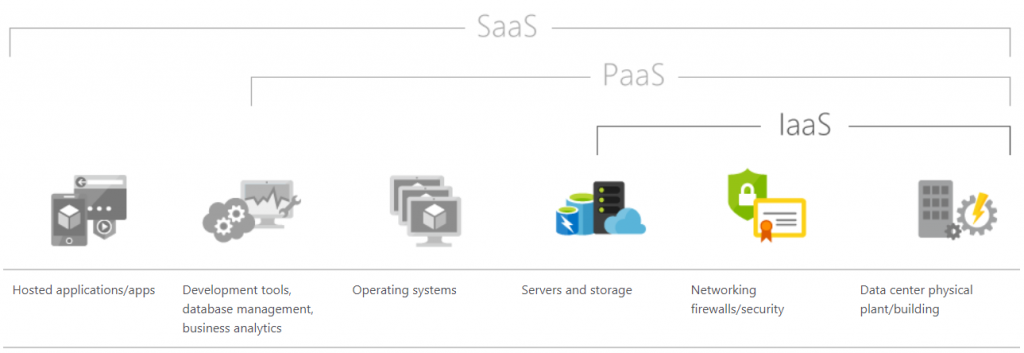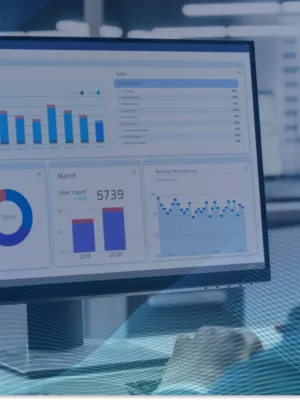
A new year can be stressful for businesses that haven’t taken the time to plan ahead — especially when it comes to their technology. That said, there’s nothing to stress over as far as cloud computing is concerned. There are some really big things happening in the cloud and, thanks to Microsoft Azure, things are going to get even better for businesses that make the move to the cloud in 2020.
Technology is constantly evolving. And thanks to cloud computing, businesses of all sizes are much better equipped these days to keep up with the rapid pace of change.
So, as we move into a new year and a new decade, it’s time to start preparing for what’s coming down the pipeline.
8 cloud computing trends for 2020
Cloud technologies and services have a lot to offer businesses in terms of innovation and growth. However, it’s not enough to sign up for one cloud service and call it a day. If you want to reap the benefits of the cloud, you have to be ready to evolve your business alongside it.
The best way to do that is to keep yourself informed of the upcoming cloud computing trends and to make sure your business is prepared to make the most of them.
Here are the trends that are going to have a huge impact on the way businesses operate next year:
1. Widespread adoption of cloud computing
Gartner foresees huge growth in public cloud investments and adoption — not just in 2020, but through the next few years.
As Sid Nag, the VP of research at Gartner said:
“At Gartner, we know of no vendor or service provider today whose business model offerings and revenue growth are not influenced by the increasing adoption of cloud-first strategies in organizations.”
This isn’t just some fad that everyone’s hopping on either. Cloud computing has demonstrated great value in terms of aiding in business growth.
For example, with the right configuration, the cloud can save your business money over the long run. In addition, cloud computing can make businesses more agile as they no longer have to worry about outdated tech or unwieldy on-premise equipment holding them back.
2. Growth in all cloud silos
Cloud computing refers to more than just infrastructure (i.e. your server technology). Different kinds of systems and technologies can run in the cloud and more businesses are going to take advantage of this in the coming year.
Azure has a great graphic that breaks down the different types:

In Gartner’s report, it notes that overall growth of public cloud computing services will be about 16.5%. But that’s just the average growth of all cloud services.
Here is how the various segments are expected to grow:
- Infrastructure as a service (servers and databases): 26.2%
- Platform as a service (developer tools, operating systems): 21.0%
- Software as a service (hosted applications and software): 16.5%
- Business process as a service (outsourced business process management): 7.7%
While businesses are certainly going to lean heavily on cloud providers to manage their server technology, development tools and software in the cloud will experience big gains, too.
3. Connected multi-cloud services
One of the more difficult decisions you’ll face when it comes to the cloud is where to procure your services from. There are a number of providers at the top of the field and many businesses will pick-and-choose a mix of services from them.
There’s just one problem with that: not all public cloud services talk to one another.
In 2020, however, expect to see more cloud provider partnerships appear. This is something that Oracle and Microsoft recently did, creating a system of “connected” public clouds for their users.
With partnerships of this kind, businesses can maximize their investment in the cloud. There won’t be any need to compromise on which providers or tools a business can use. Instead, these partnerships create a seamless experience between their technologies, giving businesses the strongest edge when they work from the cloud.
4. Increasing use of Kubernetes
Even if you’re not the one developing applications or websites for your business, the idea that containerization and Kubernetes will be increasing in popularity should excite you. Here’s why:
Building apps in the cloud can quickly get messy and complicated. With a “container”, however, you can develop and manage individual apps in isolation from one another. All of the resources you’d need are included in the container, too, which means you don’t have to worry about distributing them amongst all of your apps. You use only what’s needed in each container.
Bottom line: Containers are a highly efficient and cost-effective way to develop and organize your apps.
That said, just because containers keep things orderly doesn’t mean that management of them is easy — especially with the more containers you create. So, as containerization grows, more businesses will turn to Kubernetes to simplify management of it all. The Azure Kubernetes service, for example, is a tool that enables businesses to automate the development, management, and scaling of their containers and resources.
5. Faster deployment with serverless tech
With the cloud and Kubernetes growing in popularity in 2020, it’s only natural that serverless technology solutions will trend as well.
All “serverless” really means is that businesses aren’t responsible for configuring or managing their infrastructure (servers). Instead, the onus is on the cloud provider (like Azure) to fully maintain and manage the infrastructure, scaling the resources up and down as needed.
The biggest benefit of serverless tech is that it frees businesses up to focus on what they’re good at and what makes them money. And as they’re making more money, serverless tech simultaneously helps them cut down on overhead costs as resources are always right where they need to be: never too little, never too much.
6. More efficient cloud computing with AI
There are so many ways in which artificial intelligence, machine learning, and predictive analytics are going to change business in 2020. At the core of it, AI will be the fuel businesses need to work faster and smarter and to get more from the data they have (if they’re not already doing so).
But what about AI in the cloud?
According to the VP of Global Marketing at SIOS Technology, Frank Jablonski believes that:
“Machine learning and artificial intelligence will deliver cost savings through greater cloud efficiencies. Achieving this will require the environment or application to understand when it needs more resources and then automatically scaling up those resources to meet the increased demand. Conversely, the technology will need to understand when specific resources are no longer needed and safely turn them off to minimize costs.”
You can see why so many businesses are clamoring for AI technology, both to efficiently power their operations as well as to develop customer-side applications. But not all cloud providers are going to be ready to answer the call. But Microsoft Azure is with its AI platform.
7. Better data security in the cloud
One of the most pervasive cloud computing myths is that it’s not secure enough to store your data there. And while it’s true that there’s a certain amount of risk when moving to the cloud, working with a provider like Azure can greatly reduce the chance of a security breach or misuse of the data you place within its servers.
That said, cloud companies clearly see an issue coming as more users pour into the cloud. That’s why cloud providers will be working towards improving the security of their users’ data and systems in 2020.
One step Azure has made towards this is in the acquisition of Blue Talon.
Blue Talon is in the business of data security. As for how it works, it empowers businesses to take control of their data in the cloud while placing strict limitations on who can access it and what they can do with it. And with additional auditing capabilities, data security concerns will become a thing of the past.
By partnering with Blue Talon, Microsoft is giving its users a greater peace of mind when it comes to maintaining the integrity and security of their data.
8. Edge and cloud computing join
Usually, edge computing is defined as computing that takes place outside the cloud, usually on servers and devices that are physically closer to the end user. A great example of edge server technology is a CDN — something businesses have been using for years.
The origin server is where your web host stores your website or app. Without a CDN, this is the server that processes each request to see it. So, if the origin server exists in London, website visitors in Melbourne would have to wait longer than those in Paris to see it load on their screens. The physical distance basically translates into the virtual distance.
Edge servers prevent that though. So, with a CDN laid atop a regular server, those Australian visitors wouldn’t have to wait as long since a local Sydney edge server would deliver it to them instead.
Until recently, edge computing and cloud computing were separate, but related entities. That’s going to change in 2020 as we see providers like Azure using edge server technology to speed up cloud processing even more.
Microsoft’s developed a way to bring the two together:
“By combining the massive computing power of the cloud with increasingly connected and perceptive edge technologies, we’re creating possibilities we could only have dreamed of just a few years ago. These possibilities apply to millions of connected devices, virtually limitless data, and a growing number of multi-sensory, multidevice experiences.”
What’s more, security and speed are only going to get better in the cloud as the two come together.
Wrap-up
There are some huge things coming down the line in cloud computing. And, as a result, businesses stand to gain a lot if they can hone all of these cloud computing trends for the good of their business.
That said, as cloud computing grows, the management of it is going to become more complex and companies are going to need more than the traditional IT team to keep tabs on it. That’s why many businesses are going to turn to cloud service providers and specialists in 2020 (you might even say this is cloud computing trend #9).
If you’re hoping to take advantage of these trends in 2020, don’t try to go it alone. You’re going to need a cloud specialist that understands not only how cloud computing works, but how to get the most from it.
And Convergine will definitely help you make the most of this opportunity, adopting all the good that comes from working in the cloud while maximizing your ROI.
Interested to learn more about cloud computing? Check out our recent posts to learn more about this topic.
- 9 Top Cloud Computing Myths Debunked
- What Microsoft Azure is doing to secure your cloud assets
- Can Moving to the Cloud Save your Business Money?










